Physics
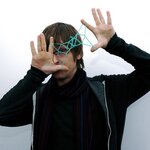
Let's take a look back through the past 12 months of quantum physics research. sharyn morrow/Flickr, CC BY-NC-ND
By Felix Pollock and Kavan Modi of Monash University.
The past year has provided some of the most interesting developments in quantum mechanics to date. The field is more than 100 years old and has been tested to unimaginable precision, yet some of its most striking statements are still being debated.
This is true of even one of the theory’s oldest results, Heisenberg’s Uncertainty Principle, where certain properties of a quantum system, such as a particle’s position and momentum,…

The advent of open access (OA) publishing has lead to a proliferation of journals which offer a peer reviewed publication venue for a nominal charge. Some of these journals are associated with scholarly associations. Such as Physical Review X. Others are not, such as a journal I published in called the International Journal of Astronomy and Astrophysics (SCRIP) or the journals published by Elsevier, and other such companies.
However, with author pays open access comes the danger that a journal will have a financial motive to publish whatever nonsense it receives…

Science is what scientist do. And the scientific method is the method scientists follow. A tautology you say? Not according to George Ellis and Joe Silk. In an opinion paper in Nature under the title 'Scientific method: Defend the integrity of physics' Ellis and Silk argue that string theorists and cosmologists contributing to inflationary cosmology are rapidly turning physics into "a no-man's-land between mathematics, physics and philosophy that does not truly meet the requirements of any". The two authors play the 'testability card' and claim the high ground of scientific integrity, thereby…
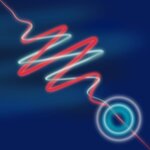
If you think of quantum physics in terms of information about a system, it is a lot less complicated, according to a new paper. In that context, features of the quantum world previously considered distinct - wave-particle duality and the quantum uncertainty principle - are different manifestations of the same thing.
Wave-particle duality is the idea that a quantum object can behave like a wave, but that the wave behaviour disappears if you try to locate the object. It's most simply seen in a double slit experiment, where single particles, electrons, say, are fired one by…

Ben Allanach, guest blogger, is a Professor of Theoretical Physics at the University of Cambridge. He is grumpy about the way that public funds are being unnecessarily directed to scientific publishing houses. So I am offering this space to him to hear what he has to say about that...
Recently, I've had to arrange payment of thousands of pounds to research journals to ensure that anyone around the world can read my research paper, despite the facts that it is freely available online, that it is my own work, that other academics have reviewed (judged) my work for free, and that my computer and…
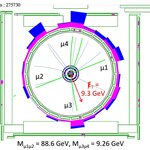
Alas, for once I must say I am not completely happy of one new result by the CDF collaboration - the experiment to which I devoted 18 years of my research time, and where I learned almost everything I know about experimental particle physics.
The result in question is a nice new search, performed on the full Run 2 data sample of proton-antiproton collisions delivered by the Tevatron collider last decade. The searched process is a very rare one, which involves the production of a Upsilon meson and a vector boson (W or Z). This associated production has a cross section in the Standard Model…
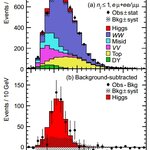
The latest paper by the ATLAS Collaboration is a very detailed report of the search for Higgs boson decays to W boson pairs in Run 1 data. The H->WW* process contributes significantly to the total bounty of Higgs boson candidates that the two CERN experiments have been able to collect in the 2011 7-TeV and 2012 8-TeV proton-proton collisions, but the presence of neutrinos in the final state prevents the clean reconstruction of an invariant mass peak, hence the WW* final state has remained a bit "in the shadows" with respect to the cherished ZZ* and gamma-gamma final states.By the way -…
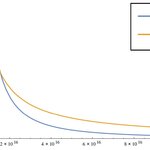
Stephen Hawking and Jacob Bekenstein made black holes hot, my latest work shows just how cool they really are. I have derived a formula for the temperature of a black hole which has the same basic shape as that derived by Bekenstein and Hawking, but which differs in slope, and has what would be observably different behavior for black holes of about 10 to 12 percent the mass of Sagittarius A* the super massive black hole at the center of the Milky Way Galaxy. In short according to my fully quantum fully relativistic calculations black holes are just a tiny bit cooler…
One of the funniest misnomers in particle physics is the naming of coupling strength parameters of the fundamental interactions as "constants".
We speak of a fine structure constant (alpha) to address one of the most important parameters of electromagnetism; and we call "strong coupling constant" the coupling strength parameter alpha_s of QCD. But these are not constants at all! In fact, they are parameters that show a quite distinct dependence on the energy of subatomic processes.
The fine structure "constant" alpha exhibits a mild variation with energy, and the effect does not have as…

I remember a funny shirt I once saw at a physics conference - it gave 10 tips on what to do when "everything else fails". Here is the list:
10. Subtract Infinity9. Add heavy fermions8. Set all fermion masses to zero7. Invent another symmetry6. Throw it on the lattice5. Blame it on the Planck scale4. Recall the success of the SM3. Invoke the Anthropic Principle2. Wave hands a lot, speak with a strong accent1. Manipulate the data
I believe the list is incomplete - the article "Auto-Concealment of SUSY in Extra Dimensions" just appeared on the arxiv, by Savas Dimopoulos et al., seems to add at…